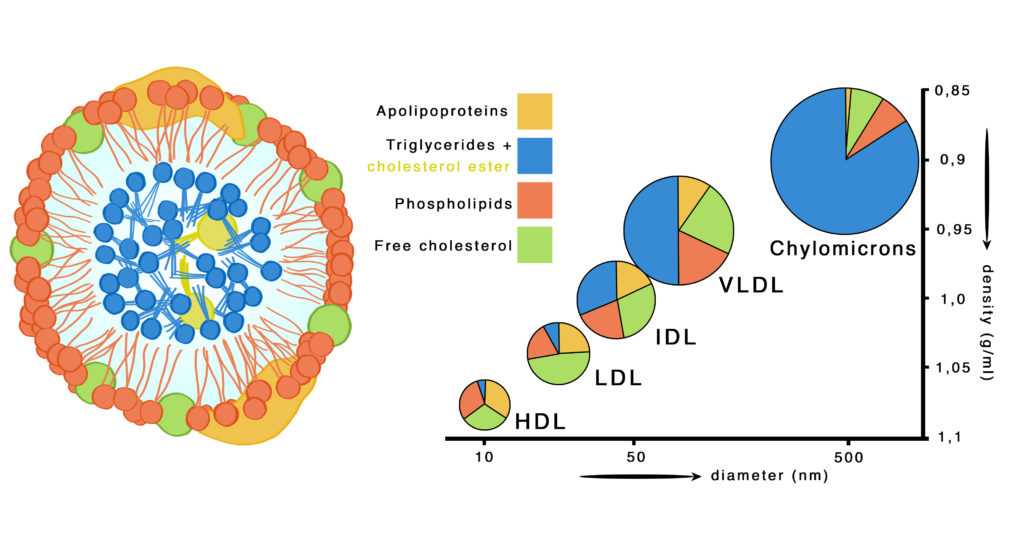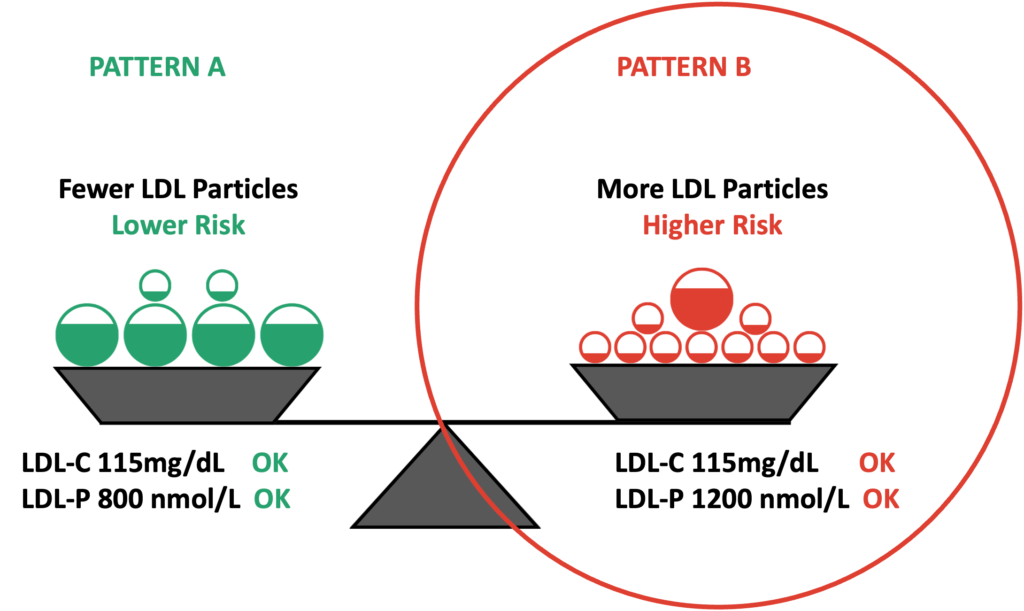Discordance between LDL-C levels and LDL particle number
Lipoproteins are much more than just vehicles for cholesterol in our body. Although lipid analysis has traditionally focused on measuring levels of total, HDL, and LDL cholesterol, science has advanced, and we now know that lipoproteins play a much more complex role in our cardiovascular health.
Not only do they carry cholesterol, but they also vary in size, density and composition, which directly influences their ability to contribute to or prevent the risk of cardiovascular disease. Understanding these differences is key to a more precise approach to the prevention and management of cardiovascular risk, and goes beyond the classic lipid profile that we have known until now.

LDL cholesterol (LDL-c) refers to the concentration or amount of cholesterol transported by low-density lipoproteins (LDL). LDL particles are the carriers of LDL cholesterol, and within LDL particles, there are differences in both size and density.
Therefore, LDL particles are highly heterogeneous in terms of size and lipid content. Due to this variability in the cholesterol content of LDL particles, the concentration of LDL-C does not accurately reflect the quantity of existing particles (LDL-P), especially in the following situations:
- Family history of atherosclerotic cardiovascular risk
- High triglycerides
- Low levels of HDL cholesterol
- Metabolic syndrome
- Diabetes mellitus
- Recurrent events due to atherosclerotic cardiovascular risk despite lifestyle changes and/or hypolipidemic therapy

Hence, a high number of LDL-P can be associated with normal LDL-C concentrations, indicating an excess of small-sized particles with low cholesterol content but high atherogenic potential.
Conversely, a high concentration of LDL-C can coexist with a normal particle number, signifying predominantly cholesterol-rich, larger particles with relatively lower atherogenicity.
This heterogeneity has led to the definition of two phenotypes or patterns associated with higher or lower cardiovascular risk, depending on the relationship between LDL-C and LDL-P levels:
- c-LDL > p-LDL, or individuals with particularly large and cholesterol-rich LDL particles (Pattern A).
- c-LDL < p-LDL, or individuals with particularly small and cholesterol-poor LDL particles (Pattern B).
The two aforementioned situations are illustrated in the following figure, adapted from Mora et al.’s work published in Circulation [3], demonstrating how two individuals with a similar LDL-C concentration may have a higher or lower particle concentration depending on their size.
Case Study 3 - Differences in Lipid Profile
In the following video, we present two cases of individuals with similar traditional lipid values but different lipoprotein profiles.
Want to Learn More?
Various studies have demonstrated that the number of LDL-P exhibits a stronger association with the risk of atherosclerosis progression and atheromatous cardiovascular disease episodes than LDL-C. Particularly in patients with discordance, the particle count proves to be a better indicator of cardiovascular risk [2,4].
Interested in having advanced lipoprotein profiling in your research studies and/or practice?
- E. M. van Leeuwen et al., “A new perspective on lipid research in age-related macular degeneration,” Prog Retin Eye Res, vol. 67, pp. 56–86, Nov. 2018, doi: 10.1016/j.preteyeres.2018.04.
006. - Otvos, J. D. et al. Clinical Implications of Discordance Between LDL Cholesterol and LDL Particle Number. Clin. Lipidol. 5, 105–113 (2011).
- Mora, S. (2009). Advanced lipoprotein testing and subfractionation are not (yet) ready for routine clinical use. Circulation, 119(17), 2396-2404.
- Tehrani, D. M., Zhao, Y., Blaha, M. J., Mora, S., Mackey, R. H., Michos, E. D., … & Wong, N. D. (2016). Discordance of low-density lipoprotein and high-density lipoprotein cholesterol particle versus cholesterol concentration for the prediction of cardiovascular disease in patients with metabolic syndrome and diabetes mellitus (from the Multi-Ethnic Study of Atherosclerosis [MESA]). The American journal of cardiology, 117(12), 1921-1927.
- E. M. van Leeuwen et al., “A new perspective on lipid research in age-related macular degeneration,” Prog Retin Eye Res, vol. 67, pp. 56–86, Nov. 2018, doi: 10.1016/j.preteyeres.2018.04.

